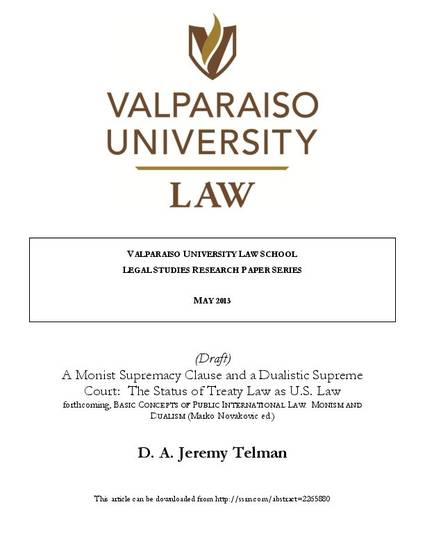
Hans Kelsen identified three possible relationships between the international and domestic legal orders. Dualism understands the international and domestic legal orders as separate and independent. Monism describes a single and comprehensive legal order but can operate with either domestic law or international law as a higher order law. Like many domestic legal orders, that of the United States has never fully worked out which of these three options specifies the status of international law in its domestic legal order. While the text of the United States Constitution suggests a form of monism in which international law is automatically part of the domestic legal order, the structure of the Constitution does not permit such automatic incorporation. In a 2008 decision, the U.S. Supreme Court articulated a theory that borders on dualism. The Court's decision makes sense of some recent U.S. practice, but it cannot be reconciled with either the text or the structure of the U.S. Constitution. Moreover, as a consequence of the Supreme Court's decision, the United States is in danger of re-enacting the de facto primacy of domestic law that the Constitution's Framers sought to address by according constitutional supremacy to treaty law.
Telman, D. A. Jeremy, A Monist Supremacy Clause and a Dualistic Supreme Court: The Status of Treaty Law as U.S. Law. Basic Concepts of Public International Law: Monism and Dualism (Marko Novakovic ed.), 2013; Valparaiso University Legal Studies Research Paper No. 13-6. Available at SSRN:http://ssrn.com/abstract=2265880
